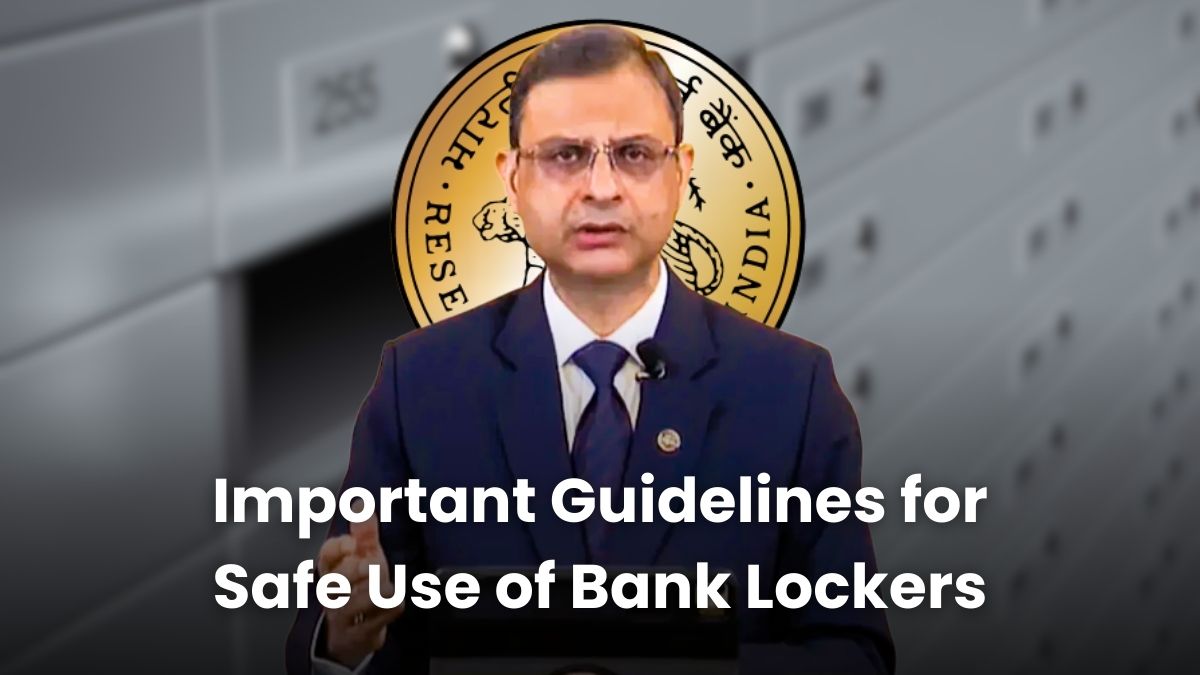Bank Locker Rules – Thinking of storing your gold, documents, or other valuables in a bank locker? It’s definitely one of the safest choices out there, but before you rush to your nearest branch, it’s important to know the latest rules laid down by the Reserve Bank of India (RBI). From locker agreements to rent rules and safety guidelines, a lot has changed and staying informed could save you from future trouble.
What Exactly Is a Bank Locker?
A bank locker is a secure storage space that banks offer to customers who want to keep their valuables safe. You can store anything valuable gold jewelry, important papers, property documents, or even family heirlooms. Lockers come in different sizes, and rent varies based on size and location.
Who Can Get a Locker?
Most people with a savings or current account can apply for a locker. Here’s who qualifies:
- Individual customers
- Joint account holders
- Businesses and firms with proper documentation
- Minors (locker will be operated by a guardian)
What’s New in 2025? RBI’s Updated Rules
The RBI has brought in updated guidelines to make locker operations more transparent and secure. Here are some of the key highlights:
- Every locker user must sign a locker agreement with the bank.
- Locker access is restricted to working hours only.
- CCTV coverage in locker rooms is now mandatory, with footage saved for at least 180 days.
- If a customer doesn’t use the locker for over a year, the bank can freeze it.
- SMS and email alerts will be sent every time your locker is accessed.
- If the bank is found negligent in case of theft or fire, it must compensate up to 100 times the annual rent.
Paying Rent on Time Is Crucial
Rent for lockers needs to be paid yearly. If you skip payments, you could face penalties or even lose access to your locker. Banks usually send reminders, but if you ignore them long enough, your locker could be broken open, and the contents moved to safe custody. Some banks might even auction them off after repeated notices.
How Much Does a Locker Cost?
Locker rent depends on the bank and the size of the locker. Here’s an idea of what you might expect to pay in 2025:
- Small Lockers: ₹1,200 to ₹2,500 per year
- Medium Lockers: ₹2,500 to ₹5,000 per year
- Large Lockers: ₹5,000 to ₹9,000 per year
Banks may also ask for a fixed deposit as a security measure, especially for high-value lockers.
Applying for a Locker – Easy but Competitive
Getting a locker isn’t complicated, but because demand is high, there might be a waitlist. Here’s how you can apply:
- Visit your bank branch and fill out a locker request.
- Submit valid ID and address proof (KYC documents).
- If required, open a fixed deposit as a security.
- Sign the locker agreement.
- Collect the locker key and make sure your nominee details are updated.
What If Something Goes Wrong?
One of the biggest misconceptions people have is that banks insure the contents of your locker. That’s not true. Banks don’t know what you’ve stored inside, so the responsibility is mostly yours. However, if damage or theft happens due to the bank’s fault like poor security or negligence they can be held liable.
The RBI says that compensation in such cases can go up to 100 times the annual rent. But you’ll need to prove negligence, and not every situation qualifies. Loss due to natural disasters or your own carelessness usually won’t be covered.
Locker Safety Tips You Should Follow
Even though lockers are secure, you should take extra care to protect your belongings. Here’s what you can do:
- Don’t share your locker key with anyone you don’t trust.
- Keep a personal inventory of what’s inside the locker.
- Try to visit your locker at least once a year—it keeps the locker active and avoids freezing.
- Make sure your nominee details are up to date so your family doesn’t face problems later.
- Read your locker agreement carefully to know your rights and responsibilities.
Using a bank locker is a smart way to protect your valuables, but only if you stay informed and follow the rules. With RBI’s new guidelines, the system is becoming more secure and customer-friendly, but you still need to be proactive. Always pay your rent on time, don’t neglect safety tips, and stay in touch with your bank about any updates or changes.




